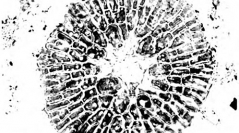

 Cryptogamie, Algologie
25 (1) - Pages 3-17
Cryptogamie, Algologie
25 (1) - Pages 3-17Two species of Phycopeltis (Trentepohliaceae, Chlorophyta) were found to occur epiphytically on leaves of ivy in Asturias, north-western Spain. The larger species, consisting of disk-shaped thalli up to 1400 μm wide, with vegetative cells 9-18 μm long and 5-11 μm wide, is referred to Phycopeltis arundinacea (Montagne) De Toni. Its morphology is in good agreement with similar material recently collected from Ireland and northern France. The smaller species (up to 180 μm in diameter) corresponds with the original description of Phycopeltis epiphyton Millardet, the generitype, originally based on material from the Black Forest, southern Germany. This provided the opportunity to reassess the morphology of the species by examining a living population comparable to the original material for the first time since its original description. Phycopeltis epiphyton from Asturias had gametangial and zoosporangial reproduction on different plants. Gametangia were produced in the central parts of the thallus and were up to 16 μm wide and 20 μm long; zoosporangia were produced apically, on the margin of the thallus, and were 12-24 μm wide. A comparison of European P. epiphyton with descriptions and illustrations reported for the same species for tropical localities suggests that caution should be used in the assessment of the morphology and distribution of this species. Records of P. epiphyton from Britain also should be critically reassessed. A provisional lectotype is designated for P. epiphyton.